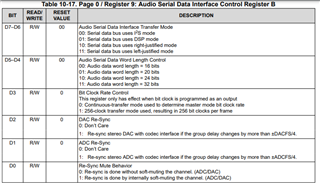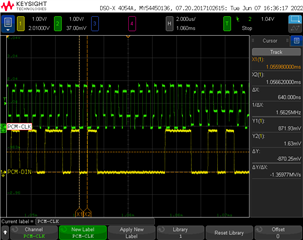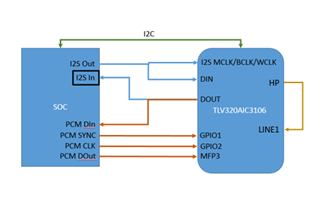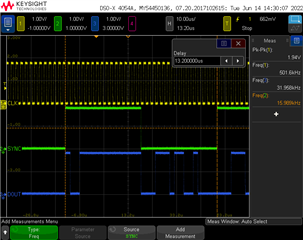Hi, TI expert
I am planing to use the TLV320AIC3106 to test I2S Out/In and PCM Out/In interfaces of the SOC with a loopback mode. The testing concept is below.
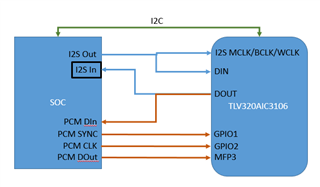
Now we are focusing on the PCM Out/In interface (I2S interface is ignored). My problem is the we can see the signal waveform at PCM SYNC, PCM CLK, and PCM DOut with a scope, but we do not see the signal waveform at PCM DIn. My initial code is below. I believe the initial code should have some problems. May I have your review and comments? Thank you!
function codec()
{
if [ ! -d /sys/class/gpio/gpio${codec_rst_pin} ] ; then
echo ${codec_rst_pin} > /sys/class/gpio/export
fi
echo out > /sys/class/gpio/gpio${codec_rst_pin}/direction
echo 1 > /sys/class/gpio/gpio${codec_rst_pin}/value
sleep 1
echo "PCM Test Mode"
i2cset -f -y $codec_i2c_bus $codec_addr 0x01 0x80 b
i2cset -f -y $codec_i2c_bus $codec_addr 0x07 0x8A b
# GPIO1 = word clock for audio serial data bus (programmable as input or output)
i2cset -f -y $codec_i2c_bus $codec_addr 0x62 0xB0 b
# GPIO2 = bit clock for audio serial data bus (programmable as input or output)
i2cset -f -y $codec_i2c_bus $codec_addr 0x63 0x80 b
# MFP3 pin usage as audio serial data input pin is enabled (MOSI)
i2cset -f -y $codec_i2c_bus $codec_addr 0x65 0x10 b
i2cset -f -y $codec_i2c_bus $codec_addr 0x08 0xC0 b
i2cset -f -y $codec_i2c_bus $codec_addr 0x29 0x02 b
i2cset -f -y $codec_i2c_bus $codec_addr 0x2B 0x00 b
i2cset -f -y $codec_i2c_bus $codec_addr 0x25 0xD0 b
i2cset -f -y $codec_i2c_bus $codec_addr 0x40 0x80 b
i2cset -f -y $codec_i2c_bus $codec_addr 0x2F 0x80 b
i2cset -f -y $codec_i2c_bus $codec_addr 0x33 0x0D b
i2cset -f -y $codec_i2c_bus $codec_addr 0x41 0x0D b
}
BR
Kevin


